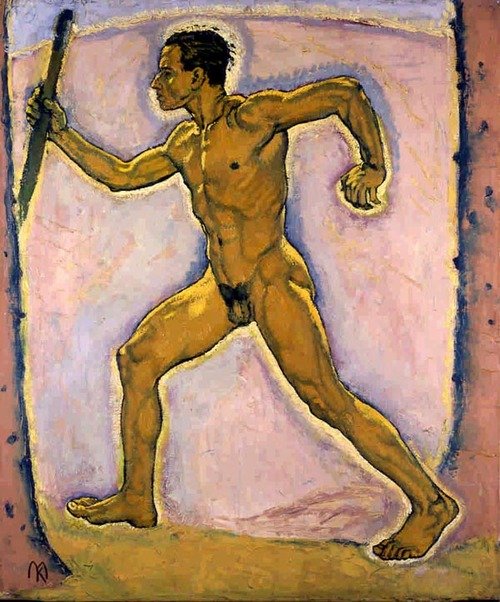Koloman Moser
dal 24/5/2007 al 9/9/2007
Segnalato da
24/5/2007
Koloman Moser
Leopold Museum, Wien
Moser remains one of the most important artists in the history of Viennese Jugendstil. Beginning with the early work dominated by illustratorly graphic art, the show features, in addition to early paintings, his stylistically innovative illustrations for art magazines and the graphics he produced as a member of the so-called 'Siebener Club' (Club of Seven), a forerunner of the Vienna Secession.

Retrospective
To this day, Koloman Moser remains one of the most important artists in the history of Viennese Jugendstil. The Leopold Museum is paying homage to his achievement with the most extensive exhibition of the artist’s work to date. The exhibition’s aim is to present this trend-setter of early modernism along the lines of his artistic development and in the great diversity of his creative output. The timeless modernity of his interior design work – which demonstrates an all-encompassing artistic vision stretching from furniture and decorative fabrics to table lamps – is presented in this exhibition alongside artistic efforts that reached the Danube Monarchy’s entire population, namely postage stamps and bank notes carrying his designs.
The exhibition is organised into several sections documenting the chronology of Moser’s artistic production. Beginning with the early work dominated by illustratorly graphic art, the show features, in addition to early paintings, Moser’s stylistically innovative illustrations for art magazines and the graphics he produced as a member of the so-called “Siebener Club” (Club of Seven), a forerunner of the Vienna Secession. A highpoint is the reunion of the individual components of Moser’s first studio, which was furnished by his friend Joseph Hoffmann. The second section explores Kolo Moser’s role in the 1897 founding of the Secession, and also his resignation together with the Klimt group in 1905.
During these eight years, Moser created his designs for the Secession building’s facade decoration as well as his posters and illustrations for the Secession magazine “Ver Sacrum”, which remain milestones of modern graphic art. As the exhibition designer of numerous Secession shows, his work as a spatial artist set new standards for the presentation of art. In the nearly 20 years he spent teaching at the Vienna School of Applied Arts, the forerunner of today’s University of Applied Arts, Moser passed on the new developments in art to several generations of students.
Koloman Moser achieved world-wide fame as an artist of the Wiener Werkstätte, which he founded in 1903 with the architect Josef Hoffmann and the financier Fritz Waerndorfer. The increased importance of arts and crafts was in accord with the Secession idea of synthesising the arts in the Gesamtkunstwerk. New research findings, including recent discoveries regarding the first apartment to be designed by the Wiener Werkstätte and the identity of its owner, form the focus of this exhibition section. Also to be found here are icons of modernism, such as Moser’s black-and-white, geometrically decorated easy chair for Purkersdorf Sanatorium.
The significance of Kolo Moser as a painter is featured in a major section of the exhibition. In contrast to his work in graphic forms and arts and crafts, Moser’s painting has remained relatively unknown. Influenced by Ferdinand Hodler and Gustav Klimt, the artist created a wide variety of highly expressive paintings in his uniquely individual coloration, including landscapes and still lifes as well as monumental portraits and allegorical and mythological depictions.
Koloman Moser is a key figure in the emergence of twentieth-century Austrian art. The approximately 500 objects exhibited at the Leopold Museum give visitors a comprehensive overview of his extraordinary oeuvre.
Leopold Museum
Volkstheater - Wien



